

The NRT is a 4m class, Ritchey-Chretien telescope with an aperture of 4.18m and a f10.635 final focal ratio. Delivering a wide FoV of 36.8arcmin. There are three main mirrors that make up the NRT optical system – Primary (M1), Secondary (M2) and Science fold (M3).
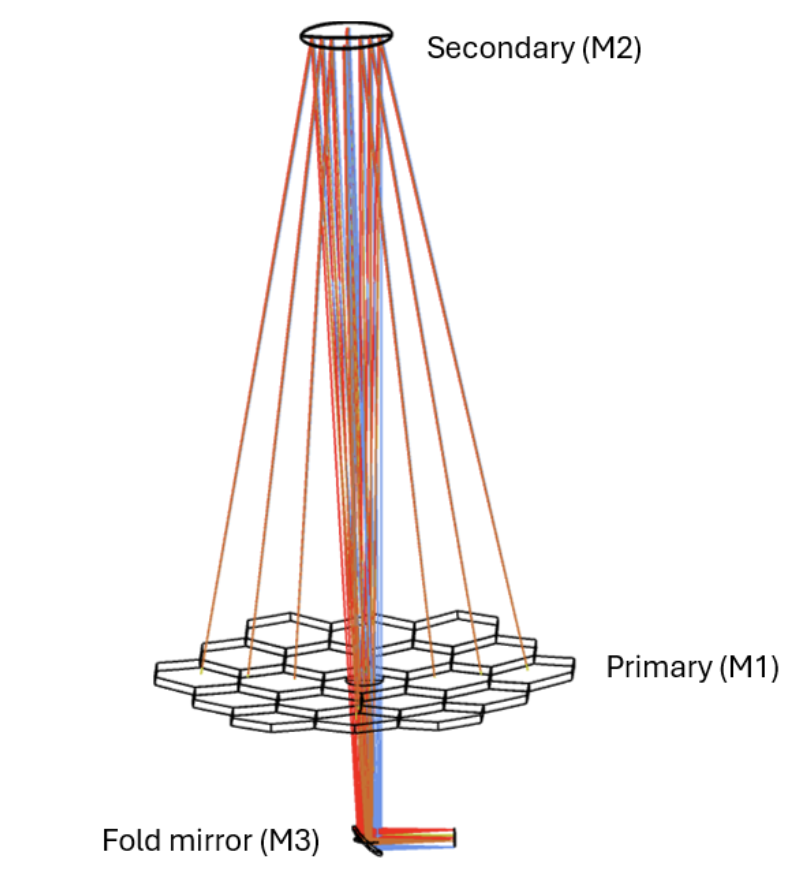
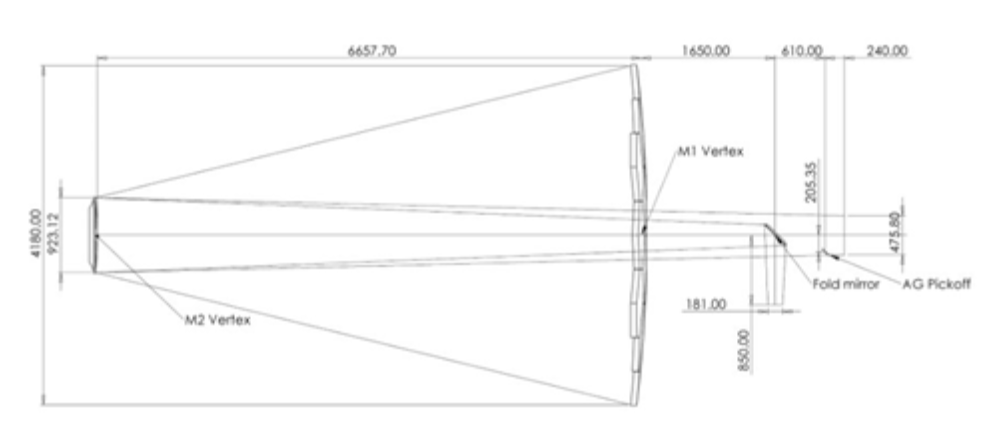
Primary mirror (M1)
It’s primary mirror (M1) is made up of 18 hexagonal segments and has a total collecting area of 10.8 m2. It is concave, hyperbolic in shape and has an f number of f2.25 with a radius of curvature (RoC) of -16770.0 mm and a conic constant of -1.02.
There are three segment types (inner ring x6), outer ring (x6) and corner segments (x6). Each mirror type will have a spare which can be swapped in when a dirty mirror is removed for cleaning and/or re-coating.
Each segment is 959mm (point to point) has a mass of 96kg so the total M1 mirror mass without supports is 1728kg. Each segment is separated by a gap of 5mm to their adjacent mirror.


Secondary mirror (M2)
The secondary mirror (M2) is a convex, hyperbolic single piece mirror of 923mm diameter. It has a Radius of curvature of +4257.7mm and conic constant of -2.33. It is also made from Zerodur low expansion glass. It has a mass of 78kg (without supports).
The M2 mirror focuses the light down to the suite of instruments at the bottom of the telescope tube to a focus point 9.16m away. The mirror can be tipped and tilted by a hexapod to adjust the beam angle. It can also move towards and away from the primary mirror to adjust focus.
The mirror is light-weighted by removing excess material from the back surface and leaving behind pockets so the structure remains stiff. A low weight M2 mirror is important because it makes it easier to design and manufacture a stiff telescope tube. If the telescope tube is not stiff enough the M2 assembly could sag under the weight of the M2 mirror and hexapod at lower telescope pointing angles.
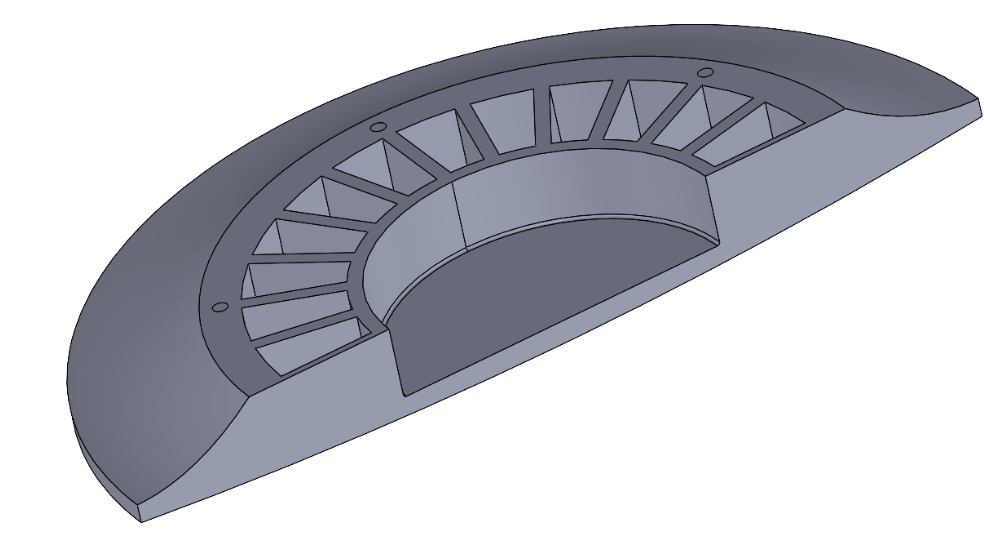

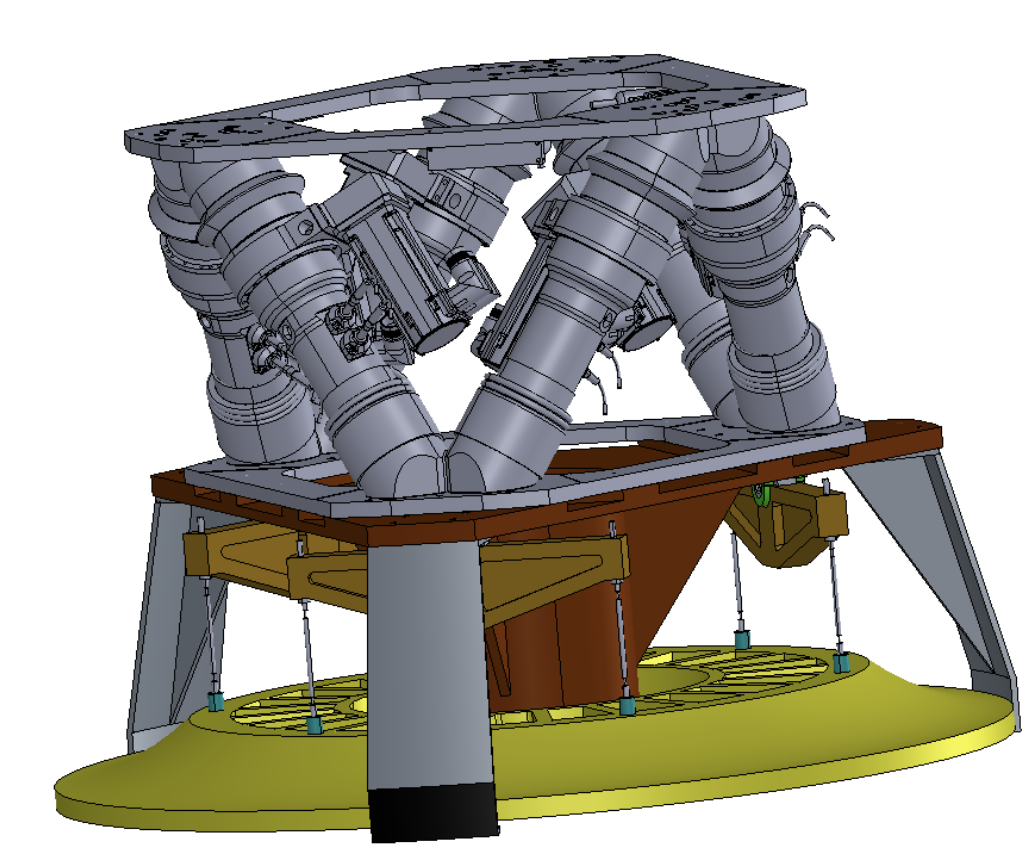
Fold mirror (M3)
The fold mirror directs the optical beam from the secondary mirror to the required side-port instrument. When the ‘straight through’ instrument is required, the fold mirror must move out of the optical path allowing a direct view of the M2 from the straight through instrument. The mirror is a flat, elliptical mirror (360mm x 253mm x 27.5mm) made of a low expansion glass (ClearCeram) and weighing 3.8kg (without supports). It is located within the A&G box structure at the bottom of the telescope tube.
It is mounted on a rotation stage to allow ‘side port’ instrument selection in 3-5 seconds and within 0.1mm of it’s required position. The rotation stage is mounted on a linear stage to allow light to the straight through instrument.
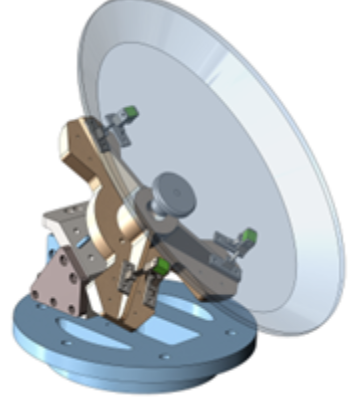
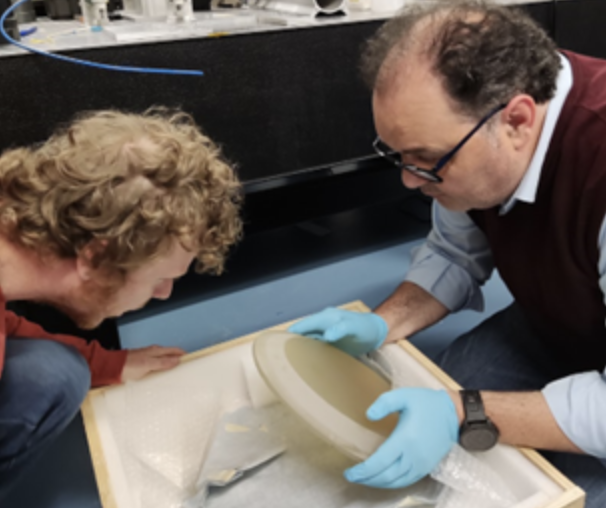
| Prescription | Modified Ritchey-Chretien |
|---|---|
| Fno | f10.635 |
| Final focal length | 44.5m |
| Tube length (M1 to M2 separation) | 6.6m |
| Back focal distance | 2.5m |
| Plate scale | 215.5 µm/” |
| Primary (M1) | |
| Diameter | 4.18m |
| RoC | -16770.0mm |
| Conic | -1.02 |
| Secondary (M2) | |
| Diameter | 923.12mm (optical) |
| RoC | +4257.7mm |
| Conic | -2.33 |
| Science fold (M3) | |
| Dims | 360mm Maj x 253mm Min (elliptical). Thickness – 27.5mm |
| Flatness | 16.25nm RMS |